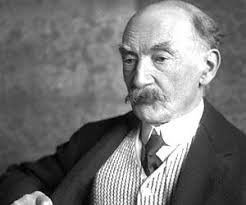
Born: Not Found
Died: Not Found
Region: Not Found
Address: Not Found
Biography:
Thomas Hardy, OM, was an English author of the naturalist movement, although in several poems he displays elements of the previous romantic and enlightenment periods of literature, such as his fascination with the supernatural. He regarded himself primarily as a poet and composed novels mainly for financial gain. The bulk of his work, set mainly in the semi-fictional land of Wessex, delineates characters struggling against their passions and circumstances. Hardy's poetry, first published in his 50s, has come to be as well regarded as his novels, especially after The Movement of the 1950s and 1960s. The term cliffhanger is considered to have originated with Thomas Hardy's serial novel A Pair of Blue Eyes in 1873. In the novel, Hardy chose to leave one of his protagonists, Knight, literally hanging off a cliff staring into the stony eyes of a trilobite embedded in the rock that has been dead for millions of years. This became the archetypal — and literal — cliff-hanger of Victorian prose.
Hardy’s father was a stonemason, engendering him with a taste for the architectural arts. After his vocational study, Hardy moved to London and made a name for himself restoring and enhancing churches in the Gothic style. He designed his own house in Dorset, called Max Gate, which Hardy fans can still visit to see where the author lived and worked. Ultimately preferring his literary work, he left the profession when earnings from Far From the Madding Crowd provided him with enough money to write fiction full time.
Thomas Hardy’s reputation rests on his novels, and it would be hard to argue otherwise. Still, the writer composed novels somewhat begrudgingly, hoping that his poetry could be more widely received. His poetic skill is on full display in the verse he penned following his wife’s death, the audacious Dynasts series, and in other achievements spread throughout his career.
Hardy’s first novel took on the themes that punctuated much of his work, but his tone wasn’t quite right. All publishers rejected the manuscript, and his friend, George Meredith, advised the author to be less polemical and abrasive. Hardy burned the manuscript, and repurposed scenes and parts for his subsequent work. Still, Hardy would not shy away from controversy, and his best work was rarely received without friction. Tess of the d’Ubervilles and Jude the Obscure are both prime examples of books that challenge the reader’s attitudes toward sexuality, religion, and class.
Hardy’s first wife died in December of 1912. He took a second bride, 39 years his junior, named Florence. From the start of their relationship, she felt insecure living in the shadow of the elderly Hardy’s longer and more formative relationship. His poems meditated much on her passing, and even one of his calendars was frozen on March 7, the day the two had met.
Hardy had a funeral of great production, and his ashes were interred in the famed Poet’s Corner of Westminster Abbey. The problem, however, was that the author wanted to be buried alongside his parents, grandparents, and first wife in Stinsford Church. As a kind of posthumous compromise, his heart was buried there, and he was given a tomb that can be visited today. You can visit either if you’re visiting London or Dorset. And for everyone else, you can read his books.
Product successfully Added!

